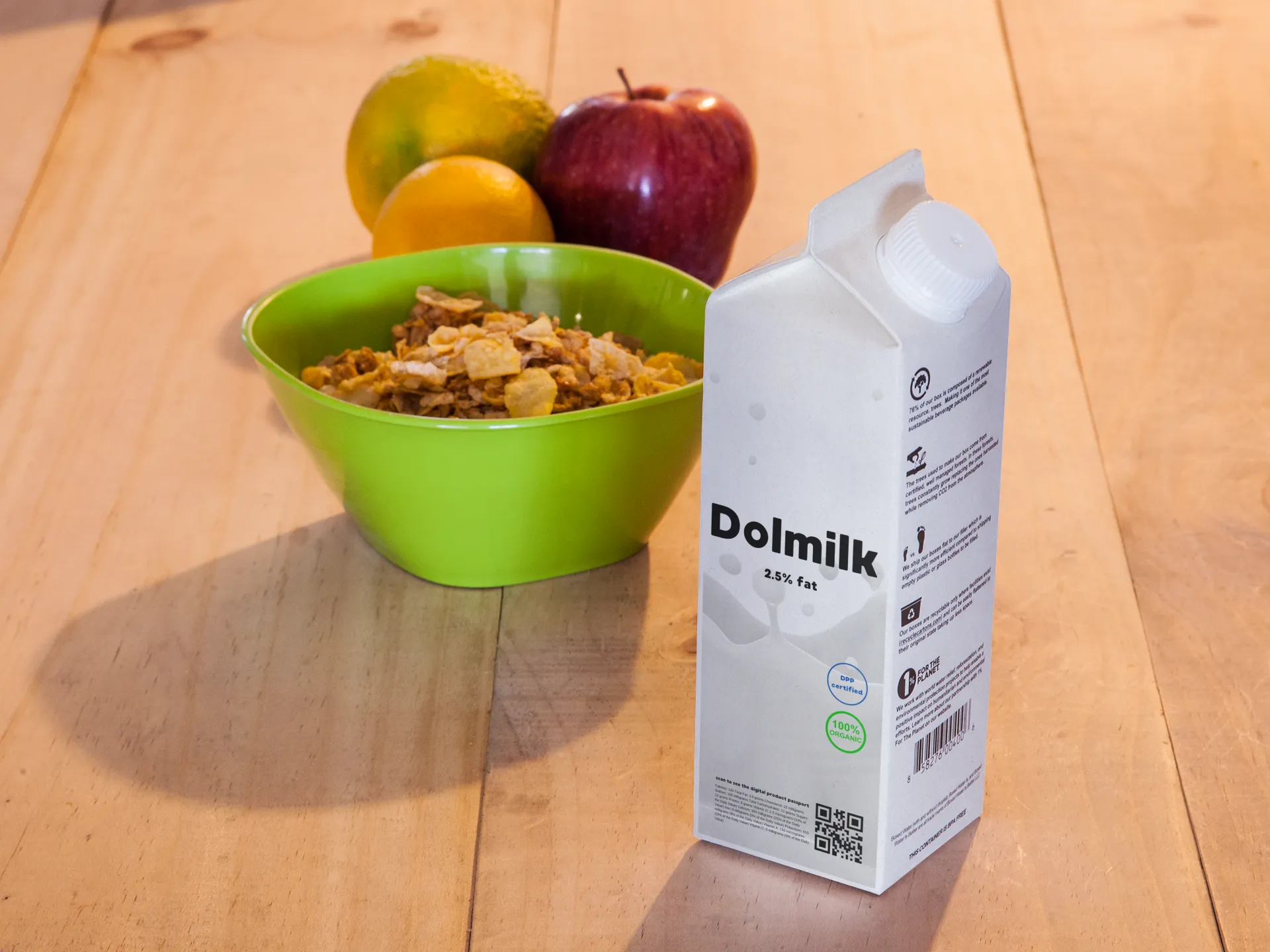

Table of Contents
1.
Understanding Digital Product Passports
2.
Benefits of Digital Product Passport QR Codes
3.
The Future of Product Labeling
4.
How to create your own Digital Product Passport QR Codes?
5.
Conclusion
Exploring the Power of Digital Product Passport QR Codes on Products
In our rapidly evolving digital age, the way we interact with products is changing, and one of the most exciting developments is the emergence of Digital Product Passports and the integration of QR codes on products. This technology is reshaping the way consumers engage with the products they purchase, offering a wealth of information, enhancing supply chain transparency, and combating counterfeiting.
Understanding Digital Product Passports
What are Digital Product Passports?Digital Product Passports are a modern approach to product labeling and information dissemination. They provide a digital identity to each product, allowing consumers and businesses to access detailed information about the product's origin, composition, and usage.
The Role of QR Codes in Product IdentificationQR codes, short for Quick Response codes, are 2D barcodes that store a significant amount of data. When applied to products as part of a Digital Product Passport, QR codes serve as a unique identifier that can be easily scanned by smartphones or other QR code readers. They link the physical product to a wealth of digital information.
Benefits of Digital Product Passport QR Codes
Enhanced Consumer InformationConsumers today are more informed and conscious of their purchases than ever before. Digital Product Passports, with their QR codes, offer consumers instant access to detailed product information, including its origin, manufacturing processes, environmental impact, and more. This empowers consumers to make informed choices.
Improved Supply Chain TransparencyBusinesses benefit from the increased transparency provided by Digital Product Passports. These QR codes allow companies to track products throughout the supply chain, reducing the risk of fraud, optimizing logistics, and improving overall efficiency.
Counterfeit PreventionCounterfeit products are a growing concern, but Digital Product Passports, when integrated with QR codes, provide a powerful tool to combat this issue. By enabling consumers and authorities to verify the authenticity of products, these codes make it harder for counterfeiters to thrive.
The Future of Product Labeling
Potential Advancements in QR Code TechnologyQR code technology continues to evolve. In the future, we can expect advancements such as more complex encoding, improved security features, and integration with augmented reality.
Consumer Expectations and SustainabilityConsumers are increasingly seeking products that align with their values, including sustainability and ethical production. Digital Product Passports and QR codes can play a crucial role in meeting these expectations by providing transparency about a product's environmental impact and ethical practices.
Transparency as a Key DriverConsumers are no longer satisfied with surface-level information about the products they purchase. They seek comprehensive details about a product's lifecycle, from sourcing raw materials to its ultimate disposal. This demand for transparency is where Digital Product Passports equipped with QR codes shine. By offering a window into the entire lifecycle of a product, they allow consumers to make informed choices that align with their values.
Environmental Impact AssessmentOne of the significant expectations from consumers is the evaluation of a product's environmental impact. Digital Product Passports can provide data on a product's carbon footprint, water usage, and other ecological factors. This information empowers consumers to support environmentally responsible brands and make more sustainable choices.
Ethical Production and Fair TradeConsumers are increasingly concerned about the ethical and fair treatment of workers along a product's supply chain. Digital Product Passports can include information about a product's production practices, certifications related to fair trade, and adherence to labor rights. For companies committed to ethical production, this can be a powerful selling point.
Circular EconomyThe concept of a circular economy, where products are designed for recycling and reusing, is gaining traction. Digital Product Passports can facilitate this by providing guidance on how to properly recycle or upcycle products, encouraging a more sustainable product lifecycle.
Consumer EmpowermentWhen consumers have access to detailed information about a product's environmental and ethical attributes through QR codes, they become advocates for change. They can put pressure on companies to adopt sustainable practices and reward those that do.
Legal and Certification ComplianceWith increasing regulations related to environmental impact and ethical production, Digital Product Passports can help companies ensure compliance and easily prove their adherence to these standards.

L2QR
The QR code platform offers effective e-marketing solutions
Create your QR code design that will meet your brand standards with colors

How to create your own Digital Product Passport QR Codes?
Creating your own Digital Product Passport QR codes for your products is a straightforward process that doesn't demand advanced technical skills or a substantial budget. Here's a step-by-step guide on how to craft QR codes that perfectly align with your brand and product information:1. Sign up on Link-to-QR.com
Go to link-to-qr.com. Our platform offers an intuitive and user-friendly interface for generating QR codes with a personalized touch for free.
2. Upload Product InformationOnce you've chosen a QR code generator platform, you can upload the relevant product information that you want to encode into the QR code. For a Digital Product Passport, this information might include details about the product's origin, composition, manufacturing processes, environmental impact, and more.
3. Generate the QR CodeUtilize the platform's QR code generator to create a unique QR code for your product. Ensure that it accurately and securely encodes all the product information, as this data is crucial for consumers who scan the code.
4. Customize the QR Code (Optional)Our QR code generator offers customization options. You can modify the QR code's appearance to align with your brand by changing its color, adding a logo, or incorporating design elements. However, remember to maintain the code's scannability and clarity during customization.

5. Generate and Download the QR Code
Once you're satisfied with the QR code's design and content, click the "Generate" or "Create QR Code" button on the platform. The platform will then generate your customized QR code and typically allow you to download it in a common image format, such as PNG or SVG.
6. Test the QR CodeBefore deploying the QR code on your products, it's crucial to test it to ensure that it correctly links to your product information. Use a QR code scanning app or your smartphone's camera to scan the code and verify that it opens the Digital Product Passport as intended.
7. Distribute or Share the QR CodeOnce you've confirmed that the QR code functions correctly, you can proceed to distribute it. For products, consider adding the QR code to product labels, packaging, or documentation. Additionally, you can share the QR code digitally on your website, in marketing materials, or via email for easy access by your customers.
By following these steps, you can create your own customized QR codes for Digital Product Passports on your products, enhancing transparency and consumer engagement while providing vital information about your products' origins and attributes.Conclusion
In conclusion, Digital Product Passport QR codes are poised to revolutionize the way we interact with products. They provide a bridge between the physical and digital worlds, offering a multitude of benefits for both consumers and businesses. As technology continues to advance, we can expect even more exciting developments in the realm of product labeling and information dissemination.